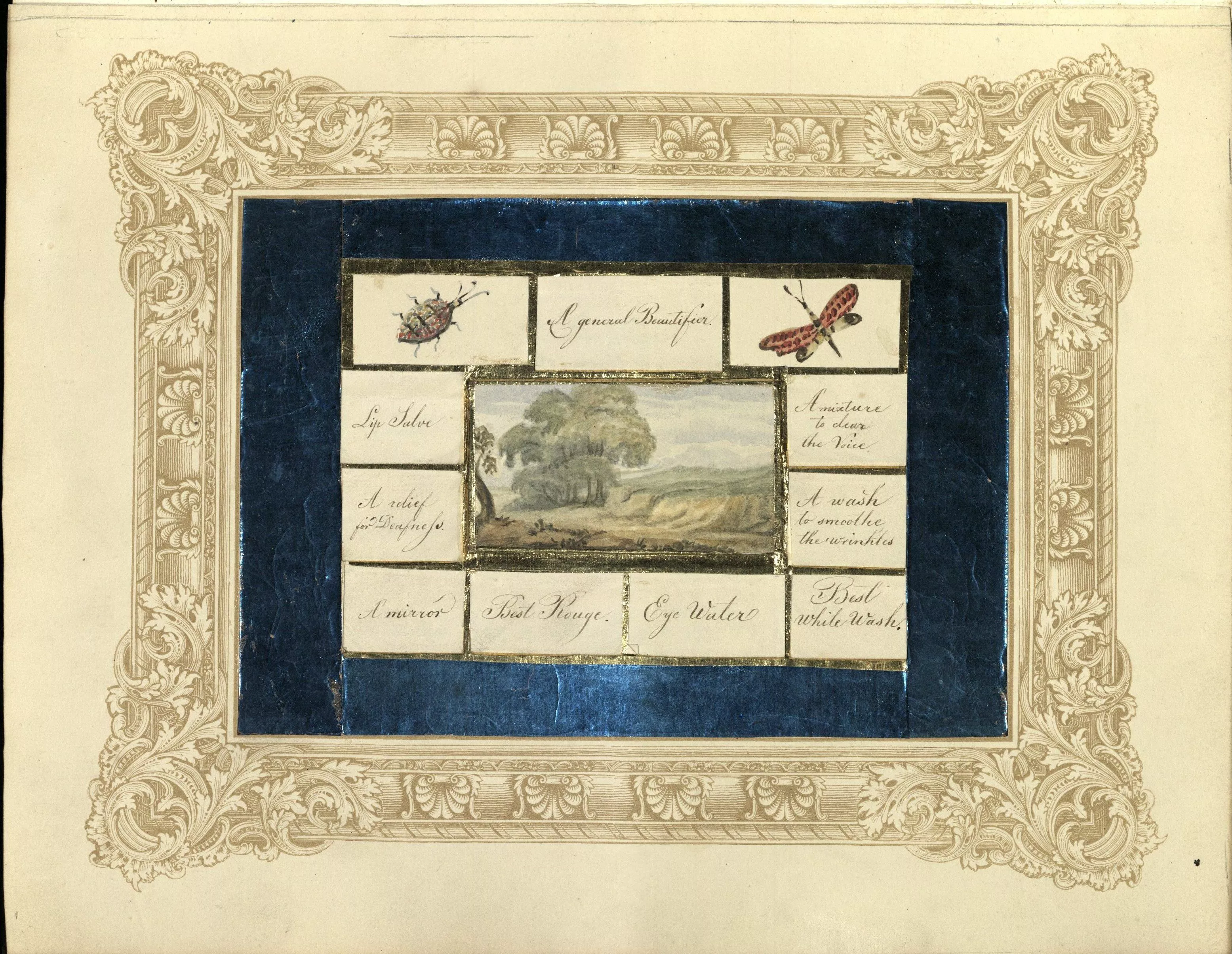Creation Date
1835-1848
Height
26.9 cm
Width
21.8 cm
Medium
Genre
Description
Within the elaborate frame printed on one page of the E. Boyes album by the book’s manufacturer, someone has pasted in shiny blue foil so as to form a second frame. This surrounds an arrangement of small paper panels, eight with handwritten labels, and two with watercolor depictions of insects, an arrangement that in its turn frames a watercolor landscape. Each of the panels is outlined with gilded strips of paper. The top panel, functioning as a caption for the entire page, reads: “A general Beautifier.” The remaining panels read, from the upper left-hand corner circling counterclockwise: “Lip Salve,” “A relief for Deafness,” “A mirror,” “Best Rouge,” “Eye Water,” “Best White Wash,” “A wash to smoothe the wrinkles,” and “A mixture to clear the Voice.”
With its array of paper panels, this page of collage seems designed to mimic the separate compartments forming the toilet table, the chest in which a nineteenth-century lady would store her cosmetic items. This piece of furniture would, for instance, often include a mirror, placed inside the chest’s lid. The inclusion of the pictures of insects among the various texts might represent a witty reference to the origins of some of the cosmetics that are identified on the paper panels: rouge, for instance, which was made from crushed cochineal insects.
Products like rouge or lip-salve were usually purchased at the apothecary’s shop, which might explain why some of the items listed seem to be more related to health than to beauty. The poetry copied into albums often treats the effects of time on love and friendship and youthful idealism, while the pressed flowers on their pages raise, and very literally, similar questions about whether feminine bloom can be preserved. This page treats such themes more cynically, as it reminds the beholder that the manufacturers of cosmetics and medicines like those identified on the paper panels likewise promise that aging may be reversed, and youth and beauty may be preserved. The oddity of encountering a list of toilet items in this lady’s album also underscores the album form’s long-standing relationship to the household books which their owners used almost as storage containers, as they stored in them all sorts of miscellaneous content: recipes, inventories, and even parlor games, placed on the pages alongside poems and religious precepts.
This album is bound in black calf leather, which has been “blind-stamped,” that is, covered with decorations that have been impressed into the damp leather with a stamp, but not gilded or colored: it was crafted by the London-based bookbinder G. Rowley, who has signed his work.
Collection
Accession Number
Houghton Library MS Eng 1792
Additional Information
Place of creation: According to the Houghton Library record, “signatures with geographical notes indicate the album may be from Yorkshire (England).”

